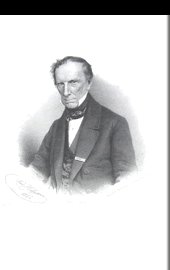A biography of Giovanni Battista Amici
1831-1839 - From Modena to Florence. The hemispherical front lens. The meetings of the Italian Scientists -  return to index
return to index
The astronomer Jean Louis Pons had died in Florence on the evening of 14 October, 1831. The Grand Duke of Tuscany, Leopoldo II, through the intermediation of Vincenzo Antinori (1792-1865), Director of the Museum of Physics and Natural History, invited Amici to take on the now-empty position of astronomer at the Museum. On 5 November, 1831 Leopoldo II nominated Amici Astronomer as well as awarding on him the solely honorific title of Professor of Astronomy at the University of Pisa. On 23 December, Giovanni Battista Amici arrived in Florence with his family and two workmen.
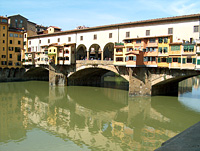 In the Tuscan capital he actually continued his work as a constructor, without carrying out his work as an astronomer, for many reasons. One of the more important reasons was the constant inadequateness of the antiquated Boboli Observatory, another were the repairs which lasted until 1841, and to these had to be summed up the greatly out-of-date astronomical instruments which the Observatory owned. One of Amici’s main aims was updating the instruments used for astronomy in Florence, and in the early 1840s he made the largest refractor telescope of Italy for Florence.
In the Tuscan capital he actually continued his work as a constructor, without carrying out his work as an astronomer, for many reasons. One of the more important reasons was the constant inadequateness of the antiquated Boboli Observatory, another were the repairs which lasted until 1841, and to these had to be summed up the greatly out-of-date astronomical instruments which the Observatory owned. One of Amici’s main aims was updating the instruments used for astronomy in Florence, and in the early 1840s he made the largest refractor telescope of Italy for Florence.
Amici had been called to revitalize the Museum as well as the sciences in Tuscany. To this aim he did his best, together with Antinori, to bring to Florence some of the best Italian minds, many of whom were in forced exile after popular uprisings. In this way Leopoldo Nobili (1784-1835), refugee in Paris, found dignified work at the Museum, and Ottaviano Fabrizio Mossotti, after having wandered from Geneva to London to Buenos Aires to Corfù, finally reached the University of Pisa in 1841 as Professor of Mathematical Physics, Heavenly Mechanics and Geodesy. Attempts to have Macedonio Melloni (1798-1854) come were not so fortunate, even if he was supported by Alexander von Humboldt, Arago and Metternich. At Nobili’s death Amici and Antinori would have wanted Melloni to cover Nobili’s now-vacant teaching position at the Florence Museum. But the Tuscany government vacillated for so long, however, that Melloni decided to accept the offer of a position in Naples.
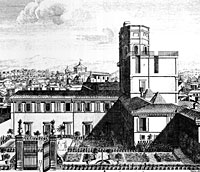 Amici built a machine which divided circles, mounted on a granite table 70 cm. in diameter. It had four achromatic microscopes in a cross at right angles in order to copy the divisions, assigned a value of 5 prime minutes, already traced onto the silver limb. Another dividing machine was mounted on a one-meter square granite base. The construction date is not known for either of these dividing machines.
Amici built a machine which divided circles, mounted on a granite table 70 cm. in diameter. It had four achromatic microscopes in a cross at right angles in order to copy the divisions, assigned a value of 5 prime minutes, already traced onto the silver limb. Another dividing machine was mounted on a one-meter square granite base. The construction date is not known for either of these dividing machines.
Descrizione di un’Oscillaria vivente nelle acque termali di Chianciano ed osservazioni microscopiche per servire alla storia di questa pianta (Description of an Oscillaria living in the thermal waters of Chianciano, and microscopic observations useful to describe this plant) was published by Amici in 1833. Sopra la dispersione de’ colori, e l’aberrazione di figura nell’occhio umano (On the dispersion of colours and the aberration of the figure in the human eye) was read in the same year at the Academy of the Georgofili, but it was published only in 1925 by Giuseppe Albertotti. Descrizione di alcuni strumenti da misurare gli angoli per riflessione (Description of various instruments for measuring angles by reflection) dates from 1836; it was published the following year in “Memorie di Matematica e di Fisica” (Vol. XXI-1837).
On 16 November, 1837, while visiting the laboratory of Amici in Florence, the amateur Irish astronomer Joshua Edward Cooper (1798-1863) and Reverend Thomas Romney Robinson (1792-1882), an Irish physicist and astronomer, bought one of his reflecting circles for thirty pounds. Robinson was a professor of Physics at the Trinity College in Dublin and, since 1823, Director of the Astronomical Observatory of Armagh, Ireland. He was a member of the Astronomical Society and of the Royal Society of London, and he participated in the international campaign promoting magnetic research, especially in the Antarctic. An expedition was organized in order to determine the position of the austral magnetic pole or poles. Two ships were prepared, the Erebus and the Terror, commanded respectively by Capt. James Clark Ross (1800-1862), in charge of the expedition, and by Capt. Francis Rawdon Moira 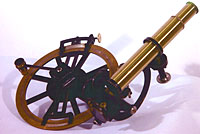 Crozier. They were the same ships which would soon thereafter take Sir John Franklin and Crozier himself on the unfortunate expedition searching for the North-West Passage. The magnetism of the Earth was the most important scientific aim of the expedition, but astronomical observations, among others, were to be made, and that new reflecting circle could come in very handy.
Crozier. They were the same ships which would soon thereafter take Sir John Franklin and Crozier himself on the unfortunate expedition searching for the North-West Passage. The magnetism of the Earth was the most important scientific aim of the expedition, but astronomical observations, among others, were to be made, and that new reflecting circle could come in very handy.
On 25 July, 1839 Robinson wrote Amici a letter from the Armagh Observatory telling him that his reflecting circle was on the way to the Antarctic, and on 8 February, 1840 he wrote another letter where he informed Amici that the Ross Expedition had left and that “we destined your reflecting Prism-Circle for that distinguished Officer”.
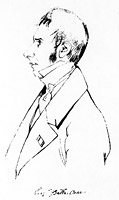 The most important progress which Amici was led to do to the microscope in the 1830s is also connected to the name of Rev. Robinson. This progress was the aperture angle of the objective: its augmentation (76°) was due to the introduction of the hemispherical front lens in a combination of achromatic objectives. Amici had used high-dispersion glass from Faraday for this, and on 4 June, 1838, he wrote the following to the Royal Astronomer George Biddel Airy (1801-1892): “To demonstrate how advantageous the substance composed by the famous Faraday is, I have prepared a combination with five lenses for Dr. Robinson with your old glass”. And on 25 October, 1855 he wrote Mossotti:
The most important progress which Amici was led to do to the microscope in the 1830s is also connected to the name of Rev. Robinson. This progress was the aperture angle of the objective: its augmentation (76°) was due to the introduction of the hemispherical front lens in a combination of achromatic objectives. Amici had used high-dispersion glass from Faraday for this, and on 4 June, 1838, he wrote the following to the Royal Astronomer George Biddel Airy (1801-1892): “To demonstrate how advantageous the substance composed by the famous Faraday is, I have prepared a combination with five lenses for Dr. Robinson with your old glass”. And on 25 October, 1855 he wrote Mossotti:
The object-glasses in my microscopes, consisting of six lenses, three of crown glass and three of Flint glass, glued in pairs with Canada balsam, are constructed with just one quality of crown glass and just one of Flint glass and they are achromatic. However, as I said, I found that the series consisting of three pairs of lenses were not the most suitable for obtaining the highest magnifications; in particular because the lower pair facing the object is too large, making it impossible to obtain an extremely short focal distance of the system and extremely large aperture. I then thought of replacing the lower pair with a simple lens, namely a half sphere, of any transparent substance, whether crown, flint, balas ruby, diamond, fused rock crystal, etc., and to annihilate the aberrations of this lens by appropriately working the two upper pairs. To do this I needed a Flint glass of extremely high dispersing power, which I was able to obtain from Faraday through the mediation of Airy.
In 1837 his Descrizione di un nuovo Istrumento per livellare (Description of a new levelling instrument), read on 29 January, 1829 at the Royal Academy of Modena, was published together with Sopra alcuni Istrumenti che servono a conoscere le situazioni parallele all’Orizzonte (Instruments for measuring the parallel situations at the horizon).
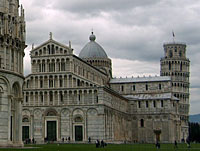 Two years later, in 1839, Amici was one of the six co-signatories of a circular with which the First Meeting of the Italian Scientists in Pisa was announced. The Prince of Musignano, Charles-Lucien Bonaparte, was the inspirer of periodic meetings of scholars in the natural sciences from all Italy, as was already the case in other European countries. The other four signatories were Vincenzo Antinori, Gaetano Giorgini, Paolo Savi and Maurizio Bufalini. The meetings were a huge success and to some seemed an invitation to abolish the political divisions of the country. The second meeting was held in Turin in 1840, the third in Florence in 1841, the fourth in Padua in 1842, the fifth in Lucca in 1843, the sixth in Milan in 1844, the seventh in Naples in 1845, the eight in Genoa in 1846, the ninth in Venice in 1847; they ended with the uprising of 1848.
Two years later, in 1839, Amici was one of the six co-signatories of a circular with which the First Meeting of the Italian Scientists in Pisa was announced. The Prince of Musignano, Charles-Lucien Bonaparte, was the inspirer of periodic meetings of scholars in the natural sciences from all Italy, as was already the case in other European countries. The other four signatories were Vincenzo Antinori, Gaetano Giorgini, Paolo Savi and Maurizio Bufalini. The meetings were a huge success and to some seemed an invitation to abolish the political divisions of the country. The second meeting was held in Turin in 1840, the third in Florence in 1841, the fourth in Padua in 1842, the fifth in Lucca in 1843, the sixth in Milan in 1844, the seventh in Naples in 1845, the eight in Genoa in 1846, the ninth in Venice in 1847; they ended with the uprising of 1848.
Amici was present for five of these and in some cases presented scientific contributions of great international importance. And since he was eager that all the audience be convinced of the truth of his claims, given the limited number of observers who could accede to the microscope, he compensated by exhibiting wax models, which he had Calamai and Tortori reproduce in the laboratories of the Museum, of the items being discussed.
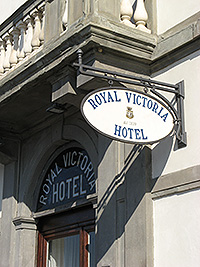 He made six reports in the first meeting: Lettura relativa a due macchine ottiche: nuova camera lucida e oculare positivo; Sul processo col quale gli ovuli vegetabili ricevono l’azione fecondante del polline; Sulla circolazione che si osserva negli internodi di Chara; Sulla Uredo Rosae; Opinione relativa all’ascensione della linfa nelle piante e Sulla presenza dei pori nei vasi delle Conifere e sulla loro struttura. (A reading on two optical machines: a new camera lucida and positive eyepiece; On the process with which plant ovules receive the fertilizing action of the pollen; On the circulation which can be seen in the internodes of the Chara; On the Uredo Rosae; An opinion on the rising of sap in the plant; On the presence of pores in the vessels of conifers, and their structure).
He made six reports in the first meeting: Lettura relativa a due macchine ottiche: nuova camera lucida e oculare positivo; Sul processo col quale gli ovuli vegetabili ricevono l’azione fecondante del polline; Sulla circolazione che si osserva negli internodi di Chara; Sulla Uredo Rosae; Opinione relativa all’ascensione della linfa nelle piante e Sulla presenza dei pori nei vasi delle Conifere e sulla loro struttura. (A reading on two optical machines: a new camera lucida and positive eyepiece; On the process with which plant ovules receive the fertilizing action of the pollen; On the circulation which can be seen in the internodes of the Chara; On the Uredo Rosae; An opinion on the rising of sap in the plant; On the presence of pores in the vessels of conifers, and their structure).
Bibliography
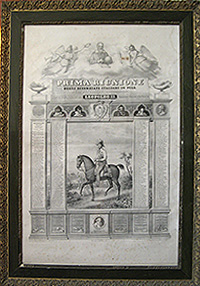 Giuliano Pancaldi, ed., I congressi degli scienziati italiani nell’età del positivismo, Clueb, Bologna 1983; A. Meschiari, Corrispondenza di Giovanni Battista Amici con Ottaviano Fabrizio Mossotti, “Atti della Fondazione Giorgio Ronchi”, 5-1999; Id., Fisici e astronomi nella Corrispondenza di Giovanni Battista Amici. Sul circolo di riflessione a prismi nella spedizione antartica di James Clark Ross, “Atti del XX Congresso nazionale di Storia della Fisica e dell’Astronomia”, Napoli, 1-3 giugno 2000, CUEN, Napoli 2001; Id., The microscopes of Giovanni Battista Amici, Tassinari, Firenze 2003; Id., Come nacque l’Officina Galileo di Firenze, Fondazione Giorgio Ronchi, Firenze 2005; Nel nome di Galileo. Pisa, 1839, video didattico di Gianluca Paoletti (sulla Prima Riunione degli scienziati italiani), La Limonaia Scienza viva in collaborazione con il MIUR, Pisa 2011.
Giuliano Pancaldi, ed., I congressi degli scienziati italiani nell’età del positivismo, Clueb, Bologna 1983; A. Meschiari, Corrispondenza di Giovanni Battista Amici con Ottaviano Fabrizio Mossotti, “Atti della Fondazione Giorgio Ronchi”, 5-1999; Id., Fisici e astronomi nella Corrispondenza di Giovanni Battista Amici. Sul circolo di riflessione a prismi nella spedizione antartica di James Clark Ross, “Atti del XX Congresso nazionale di Storia della Fisica e dell’Astronomia”, Napoli, 1-3 giugno 2000, CUEN, Napoli 2001; Id., The microscopes of Giovanni Battista Amici, Tassinari, Firenze 2003; Id., Come nacque l’Officina Galileo di Firenze, Fondazione Giorgio Ronchi, Firenze 2005; Nel nome di Galileo. Pisa, 1839, video didattico di Gianluca Paoletti (sulla Prima Riunione degli scienziati italiani), La Limonaia Scienza viva in collaborazione con il MIUR, Pisa 2011.
